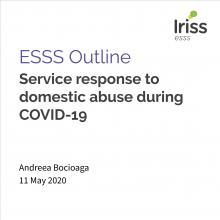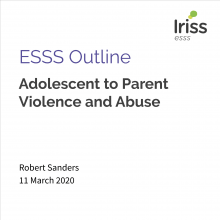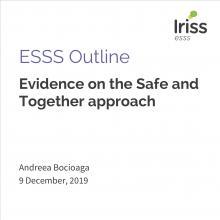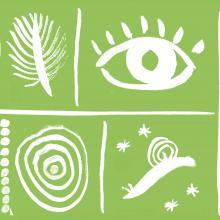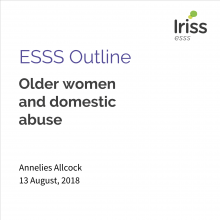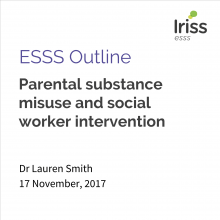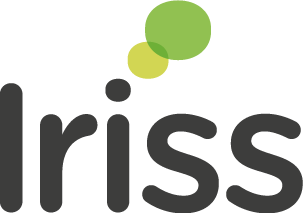Introduction
This evidence summary seeks to address the following questions relating to abuse:
What is the language around abuse in policy and support services in Scotland? What are the gaps in service provision in Scotland?
Above the evidence presented below
To understand the language around “abuse” in Scotland in more depth, we began the search on the UK legislation website. In this search, we selected those items pertaining to ‘abuse’. The search revealed that sources were specifically focused on domestic abuse, childhood and institutional abuse.
From there, we searched Government Strategies in Scotland and the UK, statistical records, third sector organisations’ reports and evaluations, academic sources and grey literature. The following evidence summary is informed by a combination of government strategies, academic papers, NHS strategy reports, evaluation reports and third sector publications.
Accessing resources
We have provided links to the materials referenced in the summary. Some materials are paywalled, which means they are published in academic journals and are only available with a subscription. Some of these are available through the The Knowledge Network with an NHS Scotland OpenAthens username. The Knowledge Network offers accounts to everyone who helps provide health and social care in Scotland in conjunction with the NHS and Scottish Local Authorities, including many in the third and independent sectors. You can register here. Where resources are identified as ‘available through document delivery’, these have been provided to the original enquirer and may be requested through NHS Scotland’s fetch item service (subject to eligibility).
Where possible we identify where evidence is published open access, which means the author has chosen to publish their work in a way that makes it freely available to the public. Some are identified as author repository copies, manuscripts, or other copies, which means the author has made a version of the otherwise paywalled publication available to the public. Other referenced sources are pdfs and websites that are available publicly.
Language in Policy
‘Abuse’ from a policy and service perspective is a complex and dynamic phenomenon. It is complex because how we talk about abuse can vary across contexts and it is dynamic because societal understanding of abuse has changed over the past decades. Currently, abuse in policy and legislation refers to incidents of physical violence, sexual violence, psychological, emotional or financial abuse. It can also involve long-term patterns of behaviour like:
- controlling behaviour, which is a range of acts designed to make a person subordinate and/or dependent by isolating them from sources of support
- exploiting someone’s resources and capacities for personal gain
- depriving them of the means needed for independence, resistance and escape, and regulating their everyday behaviour
- coercive behaviour which is an act or a pattern of acts of assault, threats, humiliation and intimidation or other abuse that is used to harm, punish, or frighten a person (NHS Scotland 2019; Police Scotland, 2019).
From a policy and service perspective, conversations around abuse in Scotland and the UK are often dominated by specific areas of strategic government concern like:
- domestic abuse (Violence against Women, Domestic Abuse and Sexual Violence (Wales) Act 2015, Transforming the Response to Domestic Abuse: Consultation Response and Draft Bill, 2019)
- child abuse (Protecting Scotland’s Children and Young People – National Policy, 2018)
- child neglect (Daniel et al 2012)
- institutional abuse (Radford et al 2014)
- rape and sexual assault (Sexual Offences (Scotland) Act 2009)
- harmful traditional practices (Prohibition of Female Genital Mutilation (Scotland) Act 2005)
- stalking and harassment (Proposed Stalking Protection (Scotland) Bill 2019)
- commercial sexual exploitation and human trafficking (Equally Safe: Scotland's strategy to eradicate violence against women, 2014)
- and to a lesser extent elderly abuse (Prosecution of elder abuse, 2019) and hate crimes.
In Scotland and the UK, these specific areas of concern around abuse are shaped by several supra-national guidelines:
- The Human Rights Act (UK Government 1998)
- The Beijng Declaration and Platform for Action that took place in 1995 calling on governments to take integrated measures to prevent and eliminate violence against women and girls
- The Council of Europe Convention on Preventing and Combating Violence against Women and Domestic Violence (Council of Europe 2011)
- The United Nations Convention on the Elimination of Discrimination Against Women (CEDAW), an agenda for action to end discrimination against women (OHCHR 2019).
Gender-based violence
In Scotland, evidence shows that men commit the vast majority of abuse related crimes and sexual offences and women are predominantly the victims (Scottish Government, 2018). During 2017-2018 alone, there were 59,541 incidents of domestic abuse recorded by the police in Scotland. Of these, 81% had a female victim and a male perpetrator (Recorded Crime In Scotland 2018-19 (2019). Wider research findings similarly suggest that approximately 1 in 5 women report being sexually assaulted as children and/or as adults (Capaldi et al 2012; Pereda et al 2009). In the UK, an estimated 2.0 million adults aged 16 to 59 years experienced domestic abuse in the year ending March 2018, equating to a prevalence rate of approximately 6 in 100 adults. Women were around twice as likely to have experienced domestic abuse than men (1.3 million women, 695,000 men) (ONS, 2018). Women are also more likely to be sexually assaulted as children and as adults compared to men (Capaldi et al 2012; Pereda et al 2009).
Informed by these statistics, service provision and policy in Scotland and the rest of the UK is shaped by a conceptualisation of abuse as gender based violence (GBV):
“GBV is mostly men’s violence towards women and girls, but it can also be violence toward other men and boys (in the form of bullying, baiting, gay bashing, sexual abuse, etc.). Gender-based violence takes many forms - physical, sexual, psychological, restricted freedoms, coercion and/or threats. GBV occurs in both the public and private spheres and cuts across race, class, caste, region and religions” (Lang, 2002).
A view of abuse as gender based violence stems from the perspective that many instances of abuse are a result of the inequality between genders (Violence against Women, Domestic Abuse and Sexual Violence (Wales) Act 2015, Transforming the Response to Domestic Abuse: Consultation Response and Draft Bill, 2019). GBV against women refers to violence that is directed against a woman because she is a woman or that affects women disproportionately (Violence against Women, Domestic Abuse and Sexual Violence (Wales) Act 2015). Welsh NA also includes in “Gender-based violence” instances of:
- violence, threats of violence or harassment arising directly or indirectly from values, beliefs or customs relating to gender or sexual orientation
- female genital mutilation
- forcing a person (whether by physical force or coercion by threats or other psychological means) to enter a religious or civil ceremony of marriage (whether or not legally binding)
- child abuse (Violence against Women, Domestic Abuse and Sexual Violence (Wales) Act 2015).
There are certain risk factors for abuse and gender based violence which vary across populations:
- Women, for example, are more likely to experience intimate partner violence if they have low education or exposure to their mother being abused by a partner
- Men are more likely than women to be subjected to institutional and clergy abuse as children, and prison-based sexual violence as adults (NHS England 2018)
- One study found a high rate of family, childhood physical abuse and sexual abuse among transgender individuals (Mizock and Lewis 2008)
- Transwomen are also disproportionately affected by sexual abuse and assault because of negative attitudes toward transgender identity (Mizok and Lewis 2008).
- In addition to abuse rooted in patriarchy and harmful and negative gender stereotypes, lesbian, gay, bisexual and transgender survivors may also experience abuse of power and control closely linked to their sexual orientation and gender identity (Magik & Kelley 2019).
An important strategic focus in Scotland and the rest of the UK when it comes to abuse is domestic abuse. The UK Government (2019) defines domestic abuse as:
“Any incident or pattern of incidents of controlling, coercive, threatening behaviour, violence or abuse between those aged 16 or over who are, or have been, intimate partners or family members regardless of gender or sexual orientation. The abuse can also encompass, psychological and economic.”
Similarly, in Scotland, the current legislative context around GBV is marked by the recent introduction of new domestic abuse legislation to protect victims and bring perpetrators to justice (Domestic Abuse (Scotland) Act 2018). This piece of legislation has led to a specific new offence that includes not only physical abuse but other forms of psychological abuse and coercive, controlling behaviour. The legislation gives clarity for victims and more powers for police and prosecutors to bring perpetrators to justice (Sturgeon 2019). The UK government is also implementing its Ending Violence against Women and Girls Strategy 2016 – 2020 (2016). This involves a consultation on service response to domestic abuse, legal provision around victim protection, multi-agency working and safeguarding children.
How we talk about individuals with experiences of abuse: from victim to thriver
The language around abuse sometimes involves terms like “victim” or “survivor”. Victim is favoured by statutory services Police Scotland. Increasingly organisations are recognising the need for terms that reflect individuals experiences as more than just victims. Nonetheless, the two are often used to describe the same experience - for example this is the case in an NHS England Strategy Report (2018). Heywood and colleagues (2019) highlighted that these terms carry different connotations among those with experiences of abuse. Their study found that many women felt the term ‘victim’ was stigmatised within society, which made them feel weak. Women preferred instead terms like ‘survivor’ or ‘thriver’.
The “survivor theory” was developed during the late 1980s by Gondolf and Fisher (1988). They argued that women who had experienced domestic violence are not “passive victims” but “help-seekers”. These women would show significant strength in their situation by adopting survivor-tactics and seeking help from support services. The concept of a ‘survivor’ then became the dominant terminology in the field.
Merritt-Gray & Wuest (1995), however, argue that the term survivor might not be helpful for the recovery process. This is because the concept of survivor centralises the abuse in the lives of women, despite that not always being the case. They argue that “any label applied by socially defined experts has the potential to take away from the woman’s redefinition of herself, and we need to ask ourselves who the label serves” (p. 91). Flasch and colleagues (2007) found that, for some women, a survivor identity can be a badge of honour. For others, such an identity was a constant reminder of past negative experiences and the shame and guilt they evoked. This indicates that individuals with experiences of abuse might have different ways of referring to their experiences. This would depend on an individual context.
Increasingly, the concept of thrivership is taking prominence in our understanding of recovery from abuse. Thriving after domestic violence is characterised by a positive outlook and looking to the future, improved health and wellbeing, a reclamation of the self, and a new social network (Heywood et al 2019). The process of ‘thrivership’ – moving from surviving to thriving after domestic violence - is a fluid, non-linear journey of self-discovery featuring three ‘stages’ of victim, survivor, and thriver (Heywood et al 2019).
This evidence review uses the terms victim or survivor to reflect the language in service provision.
Service response - assessment and engagement
Service response to abuse is ensured by statutory services like Police Scotland, NHS and Social Work. Both NHS and Police Scotland provide advice and information on their website on the various kinds of abuse mentioned above. NHS Scotland includes these various forms of abuse specifically under Gender Based Violence (NHS Scotland, 2019). Police Scotland includes advice for abuse victims under broader information for victim support (Police Scotland, 2019). This reflects how the two services might take different perspectives on abuse. Alongside statutory service, an essential part of support for victims of abuse is provided by a range of third sector services like Women’s Aid, Victim Support, Rape Crisis and others. These can provide:
- helplines and shelters which offer immediate services with 24-hour access to counselling and safe accommodation for women and children
- Children and young people services
- drop-in
- short-term counselling and advocacy
- trauma care and long-term support
- outreach work and mobile services (NICE 2013; Magić & Kelley 2019).
Abuse from a service engagement perspective often involves multi-agency collaboration. For example, cases of domestic abuse might involve Police Scotland and the NHS. Cases of child protection will probably involve other agencies like Social Work. Health and social services often need to coordinate with legal aid and advocacy, children’s services, other health and social services such as mental health services, perpetrator programs, and coordinated community responses (NHS England, 2018; Hester 2011). Victims of abuse need services matched to the risks to which they are exposed to and those at high risk of repeat violence and serious injury need a tailored and highly coordinated response (Cairns & Hoffart, 2009; Rosemann et al 2012).
How services respond to abuse is also shaped by certain policies. For example, when children are involved, local and national policies such as Getting It Right For Every Child, and increasingly the Safe and Together model underpin service response - how incidents are assessed and responded to and the nature of service collaboration. This can also vary by local authority. For example, not all local authorities in Scotland use the Safe and Together Model (Bocioaga 2019).
Hester (2011), however, referred to the fraught relationship between service sectors as the “three planet model”. In the case of child protection cases for example this includes on one side victims and perpetrators of domestic abuse; child protection and safeguarding on the other; and child contact cases. These different contexts have their own histories, philosophies, laws, and sets of professionals making responses to domestic abuse where children are involved, difficult, contradictory and, at times, unsafe. For instance, the structures for assessment and intervention contribute to what Stanley et al. (2010) call a ‘stop-start pattern of social work’ that does not allow for trust or adequate engagement.
Stanley (2011) argues that there are certain barriers which might deter individuals from engaging with services in the first place. He argues that there are numerous accounts of social workers putting pressure on women to leave abuse relationships by threatening legal proceedings. As a result, some forms of abuse like domestic violence can be underreported in family contexts when there are fears of having children removed. This restricts the survivor’s willingness to seek help for domestic abuse from social services. Among men, masculine stereotypes can also inhibit help-seeking (Stanley 2011).
An NHS England (2018) strategy report also highlights that when it comes to support services for sexual assault and abuse, victims and survivors unanimously report feeling confused by a disjointed array of services. Victims and survivors describe significant variation in the quality of service they experience when trying to access support. In the case of multi-abuse trauma, individuals might face increasing levels of bureaucracy as they try to navigate a range of issues (Edmund et al 2011). Services addressing issues in isolation might also send conflicting messages which can lead people to disengage and feel overwhelmed. This increases the risk of compounded trauma and/or re-traumatisation.
Stenius & Veysey (2005) also found that professional intervention can be re-traumatising. Their interviews with survivors of abuse show that the manner in which services and treatment are delivered by service providers and others may be more important than the actual service. Often victims and survivors find that caring individuals and a safe environment yield the greatest benefit. They suggest that “it is not so much what people do to help, but how they do it” (Stenius & Veysey 2005, p 1155). Heightening the risk further, disclosure and identification of sexual assault and abuse often take place within a criminal justice setting rather than within a service dedicated to the care and support of victims and survivors (NHS England, 2018).
Because of the challenges individuals might experience when accessing statutory services, there is a discrepancy between recorded abuse by statutory services and by third sector organisations. ‘The Day to Count’ study (Stanko 2001) compared reports of domestic violence received by the police on a single day with the population of refuges in the UK and found that refuges housed more than twice the number of women who contacted police in a day. This gives an indication of the extent to which incidents attended by the police and subsequently notified to children’s services represent the ‘tip of the iceberg’.
NHS England (2018) further reports that victims and survivors of sexual assault and abuse are not adequately involved in the development and improvement of services. Victims and survivors of sexual assault and abuse are asking for:
- collaborative and integrated services across the health, care and justice sectors to ensure that transition from one service into another are streamlined
- services that focus on the quality and continuity of care and provide joined-up support for individuals, and for their families and carers. This includes improved information-sharing and communication between NHS and third sector organisations, and better referral pathways that direct victims and survivors to the most appropriate service at the right time in their journey to recovery
Thus how individuals who experience abuse themselves engage with services varies.
Conversations around abuse are lead by government strategies like Equally Safe in Scotland (Equally Safe: Scotland's strategy to eradicate violence against women, 2014) and statutory services like NHS or Police Scotland. These shape how incidents of abuse are recorded and how service responded to them (NHS Scotland, 2019, Police Scotland, 2019). These also shape the priorities of third sector funding.
Coy et al (2009) previously argued that levels of provision in the voluntary sector, which provides a wider range of services for all women, including those who do not seek help until years after they have experienced violence, have remained static or in some cases diminished. More recently however, the UK Government has boosted funding to support victims of rape and sexual assault (Ministry of Justice, 2019). Similarly Scottish Government has boosted funding for supporting victims of childhood abuse (Freeman, 2019). Nonetheless there remain several gaps in support provision.
Gaps in provision
The Scottish Government (2014) and the UK Government (2019) recognise that a simplistic description of abuse as gender-based violence may fail to accurately reflect the dynamics of power and control, and the risk that abuse represents to the victim. The Scottish Government and UK policy do not deny the existence of abuse against men, the existence of abuse in same-sex relationships, abuse against transgender individuals and other forms of abuse. To that effect, the recently introduced domestic abuse law (Domestic Abuse (Scotland) Act 2018) uses gender neutral language.
Yet, many of the services around abuse favour an understanding of gender based violence abuse which considers the broader gender inequalities which women face. Men, boys and those who identify as lesbian, gay, bisexual, transgender, and queer (LGBTQ) can also be victims of GBV (Heywood et al 2019). Similarly, the UK Government (2019) bill consultation on domestic abuse further clarifies that abuse can also involve wider family members, including parental abuse by an adolescent or grown child. It can exist between older siblings, or the wider extended family in elder abuse or honour-based abuse (such as forced marriage).
Men as victims of abuse
Some have argued that the focus of policy and legislation on GBV restricts the nature of services being funded (Dempsey 2013, Bates 2019). Some organisations claim that as a result, many areas of provision when it comes to LGBT and men victims of abuse are overlooked (AMIS 2020). In Scotland, 18% of reported incidents of domestic violence have men as victims of domestic violence (Scottish Government, 2018). A growing body of evidence suggests that in high-income settings, women are indeed becoming more physically aggressive as women’s status improves and social norms against female violence loosen (Heise & Fulu 2014). According to Heise & Fulu (2014) this has led to an increase in ‘mutually violent’ relationships, although the health and social consequences of violence remain more severe for women than for men. Women likewise are the victims of the most severe types of physical violence and the majority of incidents reported to the police. Yet service provision when it comes to supporting male victims of domestic abuse is lacking (Dempsey 2013).
For example, according to AMIS (2020) men experiencing domestic abuse in Scotland might only have access to telephone support as opposed to face to face support. Moreover, there is no refuge support for men looking to leave an abusive relationship. Dempsey (2016) argues that while third sector organisations have the remit to cater to certain population groups the same cannot be said about statutory services which, “while they may have a range of particular services for particular groups of people, are under an Equality Duty obligation not to discriminate taking the service as a whole” (p 415). For example, NHS information provision when it comes to abuse specifically is focused on gender-based violence which might alienate men and LGBT victims and survivors.
LGBT+ community
Magić and Kelley (2019) highlight that more than one in four gay men and lesbian women in the UK and more than one in three bisexual people have reported at least one form of domestic abuse since the age of 16. In addition, prevalence rates of domestic abuse may be higher for transgender people than any other section of the population. Despite these stark levels of domestic violence and abuse, LGBT+ survivors are disproportionately under-represented in voluntary and statutory services, including criminal justice services. GBT+ male survivors may perceive domestic abuse services as primarily designed to support women (Magik & Kelley 2019). This can lead this group to question whether the service is for them and may thus prefer to access LGBT+ specialist services.
Recently, however, in response to these increasing concerns, a coalition of several organisations in Scotland including SACRO, Shakti and LGBT Youth have introduced a service called Fear Free (2020) which is aimed specifically at men and the LGBT community who are victims of domestic abuse. This service includes safety planning, emotional support, advocacy, mentoring, and practical support with housing, employment/education, and assistance to access appropriate benefits. Similarly, LGBT Domestic Abuse Scotland is a charity that raises awareness of LGBT people's experiences of domestic abuse and works to improve service responses to LGBT people who experience domestic abuse and other forms of gender based violence. They do training, policy, and research. Their website signposts to other services like women’s aid which offers advice, shelter, advocacy and two helplines for men.
BAME
A NICE report (2014) similarly highlighted a gap in domestic abuse provision for wider BAME populations. Bawso (2010) consider that: ”For many BAME women it is not possible to differentiate between violence experienced as a woman and violence experienced as a black and minority ethic person. Most BAME women suffering domestic abuse are not employed and have no separate disposable income, live in poor housing, and lack the education and opportunities to progress. Their isolation is made all the greater by language and cultural differences and they are ill equipped to escape abuse”. Magik & Kelley (2019) also found that BAME LGBT+ people are at a disproportionate risk of abuse from family members. LGBT+ BAME people’s experiences of reaching out to services may also be compounded by the intersection of racism, homophobia and transphobia.
BAME women especially are also more at risk for specific forms of domestic abuse such as forced marriage and ‘honour’-based violence. Chantler et al (2017) found that between 2011 and 2014, there were 191 cases of forced marriage in Scotland, with a fairly even spread across the years. They argue that BAME services have found it more difficult to build sustainable foundations not least because of additional costs such as interpreting services; time-intensive community outreach; and supporting women with uncertain immigration status and/or no recourse to public funds (Chantler et al 2017).
Support for victims of child marriage was previosuly reported to be extremely scarce (Stanley, 2011). In the past decade, however, Scotland has introduced The Forced Marriage etc. (Protection and Jurisdiction) (Scotland) Act 2011 came into force in November 2011. It introduced Forced Marriage Protection Orders (FMPO) to protect people from being forced to marry, or who are already in a forced marriage.
Older Women
Older women who experience abuse are also often overlooked by services. A recent ESSS report highlighted that in more recent years the deficit in both research and resources for older adults has been acknowledged worldwide, however older women are still described as "invisible victims" of domestic abuse (Allcock, 2018). The literature suggests that older women are less likely to access domestic abuse services and resources than younger women. Possible reasons for this include a belief that services are only for younger people or or people with young children and limited awareness of the formal services and options available to them. Many women's refuges are not able to fulfil the practical needs of older women, especially those with disabilities (Solace Women's Aid 2016). This is supported by figures from Women's Aid (2017), with only one out of 276 refuge services listed on Routes to Support offering specialist services for women over 45.
People with disabilities
There is limited evidence on experiences of abuse among people with disabilities but some figures indicate that the risk of domestic abuse is higher for women and men with a long-standing illness or disability than for the general population (Office for National Statistics 2018). Some argue that especially at risk are women and girls with a learning disability (Health Scotland, 2019).
Service response in these cases is problematised by challenges like staff training and knowledge in identifying abuse as well as knowing how to support someone with a disability.Those experiencing abuse may also find that services are not accessible, both in terms of the information they provide and their physical accessibility.
For individuals with learning disability, services might also label behaviour perceived as challenging as a result of the learning disability instead of exploring the root causes (Health Scotland, 2017).
Violence and abuse directed at parents, carers or siblings by children and young people
Adolescent to parent abuse is another hidden form of abuse that is under-reported to statutory services, similarly to elderly abuse (Holt, 2011). This is partly because adolescent to parent abuse is not specifically recorded in police or health and social care databases and so it is difficult to gauge the number of reported cases on a national level (Home Office, 2015). A third sector support organisation called Family Lives, however, received 22,537 phone calls in 2010 from parents reporting aggression from their children with 7,000 reported cases of physical aggression (Home Office, 2015). Yet, there is no current legal definition of adolescent to parent abuse. Instead, it is often considered as a form of domestic and abuse. As a result and depending on the age of the child, it may fall under the government’s official definition of domestic violence and abuse. There might also be a lot of stigma in reporting adolescents to parent abuse. A Home Office report (2015) indicates that the hidden nature of this kind of abuse is exacerbated by the lack of official recognition and policy, and a lack of awareness among staff but also the general public.
Abuse and domestic violence among adolescents
NICE (2014) further highlights there is a gap in provision for adolescents partner violence and abuse. Similarly, NHS England (2018) show the internet has transformed the environment around sexual assault and abuse and the risks around sexual exploitation and harmful sexual behaviour.
According to NHS England (2018) behaviours amongst adolescents are changing, particularly their understanding of healthy relationships, and it is also becoming more difficult to teach younger children how to keep themselves safe on social media and speak out if they need to. Many parents may find it difficult to talk to their children about the risks of sexual assault and abuse.
The way children and young people use technology and social media can make them more vulnerable to sexual exploitation online. ’Sexting’ and other age-inappropriate sexual behaviours, such as watching extreme pornography or making inappropriate remarks, have also become more commonplace (NHS England 2018). CYCJ and Barnardo’s (2017) suggests that children and young people at risk of online sexual abuse may be younger than those who experience other types of sexual exploitation and may not fit into standard definitions of ‘vulnerable’.
The areas explored above suggest that service provision needs to further consider:
- The difference in outcomes and interventions for women, men and other minority groups.
- That tailored approach is needed for individuals facing different levels risk e.g. BAME, older people, people with disabilities.
- Whole family interventions - like the Safe and Together Model (Bocioaga, 2019).
References
Abused Men in Scotland (AMIS) (2020) Facts, Figures & Research. https://abusedmeninscotland.org/knowledge/facts-figures-research/
Allcock, A (2018) ESSS Outline: Older women and domestic abuse. Iriss. https://doi.org/10.31583/esss.20180813
BAWSO (2020) Domestic abuse from a BME perspective https://bawso.org.uk/home/what-is-domestic-abuse/domestic-abuse-from-a-bme-perspective/.
Bates, E. A. (2019) Men’s experience of domestic abuse in Scotland: An Update http://insight.cumbria.ac.uk/id/eprint/4610/1/Bates_MensExperience.pdf
Beijng Declaration and Platform for Action (1995) https://www.un.org/en/events/pastevents/pdfs/Beijing_Declaration_and_Platform_for_Action.pdf
Bocioaga, A (2019) ESSS Outline: Evidence on the Safe and Together approach. Iriss. http://doi.org/10.31583/esss.20191209
Cairns K, & Hoffart I (2009) Keeping Women Alive – Assessing The Danger. https://www.acws.ca/sites/default/files/documents/DangerAssessment-FullReport_FINAL.pdf
Callaghan J E M, Fellin L, Alexander J H (2019) Promoting Resilience and Agency in Children and Young People Who Have Experienced Domestic Violence and Abuse: the “MPOWER” Intervention. Journal of Family Violence, 34(6), 521–537. https://doi.org/10.1007/s10896-018-0025-x
Capaldi D M, Knoble N B, Shortt J W & Kim H K (2012) A Systematic Review of Risk Factors for Intimate Partner Violence. Partner Abuse, 3(2), 231–280. https://doi.org/10.1891/1946-6560.3.2.231
Chantler K, Baker V, MacKenzie M, McCarry, M, & Mirza N. (2017). Understanding forced marriage in Scotland. https://www.gov.scot/publications/understanding-forced-marriage-scotland/
Convention on the Elimination of All Forms of Discrimination against Women (1979) https://www.ohchr.org/EN/ProfessionalInterest/Pages/CEDAW.aspx
Council of Europe (2011) Convention on preventing and combating violence against women and domestic violence. Council of Europe Treaty Series, (210), 25. https://rm.coe.int/168008482e
Coy M, Kelly L, Foord J (2009) Map of Gaps: The postcode lottery of Violence Against Women support services in Britain http://www.refuge.org.uk/files/Map-of-Gapsreport-2009.pdf
CYCJ and Barnardo’s Scotland (2017) Over the Internet, Under the Radar: Prevention of Online Child Sexual Abuse and Exploitation in Scotland https://cycj.org.uk/wp-content/uploads/2017/02/Over-the-Internet-Under-the-Radar-1.pdf
Daniel B, Burgess C, Scott J(2012) Review of Child Neglect in Scotland, https://www.gov.scot/binaries/content/documents/govscot/publications/independent-report/2012/07/review-child-neglect-scotland/documents/review-child-neglect-scotland/review-child-neglect-scotland/govscot%3Adocument/00397132.pdf
Dempsey B (2013) Men’s experience of domestic abuse in Scotland: What we know and how we can know more. https://abusedmeninscotland.org/wp-content/uploads/final-what-we-know-litrev-june-2013.pdf
Dempsey B (2016) Review: Male victims of domestic abuse: implications for health visiting practice. Journal of Research in Nursing, 21(6), 415–416. https://doi.org/10.1177/1744987116654078
Edmund D S, Bland P J (2011) Real Tools: Responding To Multi-Abuse Trauma A Tool Kit To Help Advocates And Community Partners Better Serve People With Multiple Issues. http://www.nationalcenterdvtraumamh.org/wp-content/uploads/2012/09/RealTools_RespondingtoMultiAbuseTrauma_BlandandEdmund.pdf
Ending Violence against Women and Girls Strategy 2016 – 2020 (2016) https://assets.publishing.service.gov.uk/government/uploads/system/uploads/attachment_data/file/522166/VAWG_Strategy_FINAL_PUBLICATION_MASTER_vRB.PDF
Equally Safe Scotland's strategy to eradicate violence against women (2014) Scottish Government https://www.gov.scot/binaries/content/documents/govscot/publications/strategy-plan/2018/04/equally-safe-scotlands-strategy-prevent-eradicate-violence-against-women-girls/documents/00534791-pdf/00534791-pdf/govscot%3Adocument/00534791.pdf
Fear Free (2020) Fear Free https://fearfree.scot/
Flasch P, Murray C. E & Crowe A (2017) Overcoming Abuse: A Phenomenological Investigation of the Journey to Recovery From Past Intimate Partner Violence. Journal of Interpersonal Violence, 32(22), 3373–3401. https://doi.org/10.1177/0886260515599161
Forced Marriage etc. (Protection and Jurisdiction) (Scotland) Act (2011) http://www.legislation.gov.uk/asp/2011/15/contents/enacted
Freeman J (2019) quoted in “Support for survivors of abuse”, Scotish Government, 2019 https://www.gov.scot/news/support-for-survivors-of-abuse-1/
Gondolf E W & Fisher E R (1989) Battered Women as Survivors: An Alternative to Treating Learned Helplessness. Contemporary Sociology, 18(5), 766. https://doi.org/10.2307/2073352
Health Scotland (2019) Gender-based Violence and Learning Disability: Guidance for practitioners. http://www.healthscotland.scot/media/2846/gender-based-violence-and-learning-disability.pdf
Heise L & Fulu E (2014) What do we know and what are the knowledge gaps: What works to prevent violence against women and girls.https://assets.publishing.service.gov.uk/government/uploads/system/uploads/attachment_data/file/337603/What-know-what-knowledge-gaps-D.pdf
Hester M (2011) The Three Planet Model: Towards an Understanding of Contradictions in Approaches to Women and Children’s Safety in Contexts of Domestic Violence. British Journal of Social Work, 41(5), 837–853. https://doi.org/10.1093/bjsw/bcr095
Heywood I, Sammut D, Bradbury-Jones C (2019) A qualitative exploration of ‘thrivership’ among women who have experienced domestic violence and abuse: Development of a new model. BMC Women’s Health, 19(1) https://doi.org/10.1186/s12905-019-0789-z
Holt A (2011) Responding to “parent abuse”, The Psychologist. https://thepsychologist.bps.org.uk/volume-24/edition-3/responding-parent-abuse
Home Office (2015) Information guide: adolescent to parent violence and abuse (APVA) https://assets.publishing.service.gov.uk/government/uploads/system/uploads/attachment_data/file/732573/APVA.pdf
Humphreys C, Mullender A, Thiara R & Skamballis A (2006) ‘Talking to My Mum.’ Journal of Social Work, 6(1), 53–63. https://doi.org/10.1177/1468017306062223
Lang J L (2002) Men, Masculinities and Violence. International Conference “Eradicating Violence against Women and Girls – Strengthening Human Rights” http://www.gtz.de/violence-against-women/english/
LGBT Domestic Abuse (2020) LGBT Domestic Abuse. [ONLINE] Available at: https://lgbtdomesticabuse.org.uk/.
Magić J & Kelley P (2019) Recognise & Respond: Strengthening advocacy for LGBT+ survivors of domestic abuse. Galop, the LGBT+ anti-violence charity. London, UK. http://www.galop.org.uk/wp-content/uploads/Galop_RR-v4a.pdf
Merritt-Gray M & Wuest J (1995) Counteracting abuse and breaking free: The process of leaving revealed through women’s voices. Health Care for Women International, 16(5), 399–412. https://doi.org/10.1080/07399339509516194
Mizock L, Lewis T K (2008) Trauma in transgender populations: Risk, resilience, and clinical care. Journal of Emotional Abuse, Vol. 8, pp. 335–354. https://doi.org/10.1080/10926790802262523
N Sturgeon (2019) quoted in “Protecting People from abuse”, Scottish Government https://www.gov.scot/news/protecting-people-from-domestic-abuse/
National Health Service (NHS) England (2018) Strategic direction for sexual assault and abuse services: Lifelong care for victims and survivors. https://www.england.nhs.uk/wp-content/uploads/2018/04/strategic-direction-sexual-assault-and-abuse-services.pdf
NHS Scotland (2019) Gender based violence http://www.healthscotland.scot/health-topics/gender-based-violence
NICE (2013) Review of Interventions to Identify, Prevent, Reduce and Respond to Domestic Violence https://www.nice.org.uk/guidance/ph50/evidence/review-of-interventions-to-identify-prevent-reduce-and-respond-to-domestic-violence-pdf-430413229
NICE (2014) Domestic violence and abuse: multi-agency working https://www.nice.org.uk/guidance/ph50/resources/domestic-violence-and-abuse-multiagency-working-pdf-1996411687621
NSPCC (2020) Domestic Abuse, Recovering Together (DART) https://learning.nspcc.org.uk/services-children-families/dart/
ONS (2018) Domestic abuse in England and Wales. https://www.ons.gov.uk/peoplepopulationandcommunity/crimeandjustice/bulletins/domesticabuseinenglandandwales/yearendingmarch2018
Pereda N, Guilera G, Forns M, & Gómez-Benito J (2009) The international epidemiology of child sexual abuse: A continuation of Finkelhor (1994) Child Abuse and Neglect, 33(6), 331–342. https://doi.org/10.1016/j.chiabu.2008.07.007
Police Scotland (2019) Advice for Victims of Crime. https://www.scotland.police.uk/keep-safe/advice-for-victims-of-crime/
Prohibition of Female Genital Mutilation (Scotland) Act (2005) http://www.legislation.gov.uk/asp/2005/8/contents
Proposed Stalking Protection (Scotland) Bill (2019) https://www.parliament.scot/S5MembersBills/20190425_Final_Consultation_document.pdf
Prosecution of elder abuse (2019) Scottish Parliament https://www.parliament.scot/parliamentarybusiness/CurrentCommittees/111160.aspx
Protecting Scotland’s Children and Young People - National Policy (2018) Scottish Government https://www.gov.scot/binaries/content/documents/govscot/publications/factsheet/2018/03/protecting-scotlands-children-national-policy-and-draft-child-abuse-prevention-activity/documents/protecting-scotlands-children-young-people-policy-pdf/protecting-scotlands-children-young-people-policy-pdf/govscot%3Adocument/Protecting%2BScotland%2527s%2BChildren%2Band%2BYoung%2BPeople%2BPolicy.pdf
Radford L, Dodd S, Barter C, Stanley N, Akhlaq A (2017) The abuse of children in care in Scotland: A research review https://www.childabuseinquiry.scot/media/1211/prevalence-of-abuse-in-scotland-professor-lorraine-radford.pdf
Recorded Crime In Scotland 2018-19 (2019) https://www.gov.scot/binaries/content/documents/govscot/publications/statistics/2019/09/recorded-crime-scotland-2018-19/documents/recorded-crime-scotland-2018-19/recorded-crime-scotland-2018-19/govscot%3Adocument/recorded-crime-scotland-2018-19.pdf
Rosemann U, Logar R, Vargova B M, Kemshll H, Hilder S, Fisher H (2012) Capacity Building in Risk Assessment and Safety Management to Protect High Risk Victims http://fileserver.wave-network.org/trainingmanuals/PROTECTII_Risk_Assessment_and_Safety_2012_English.pdf
Scottish Government News (2019) Protecting people from domestic abuse. https://www.gov.scot/news/protecting-people-from-domestic-abuse/
Sexual Offences (Scotland) Act (2009) https://www.legislation.gov.uk/asp/2009/9/contents
Sharp C, Jones J, Netto G and Humphreys C (2011) We Thought They Didn’t See: CEDAR in Scotland - Children and Mothers Experiencing Domestic Abuse Recovory: Evaluation Report (Vol. 75) https://www.cedarnetwork.org.uk/wp-content/uploads/2011/03/Evaluation-Report-DOWNLOAD1.pdf
Solace Women’s Aid (2016) The Silver Project : Domestic Abuse Service for Women Over 55. https://www.solacewomensaid.org/sites/default/files/2018-05/Solace-Silver-Project-Evaluation-Report-2013-16-Feb-16.pdf
Stanko, E (2001) The Day to Count:Reflections on a Methodology to Raise Awareness about the Impact of Domestic Violence in the UK. Criminology & Criminal Justice https://www.researchgate.net/publication/240721391_The_Day_to_CountReflections_on_a_Methodology_to_Raise_Awareness_about_the_Impact_of_Domestic_Violence_in_the_UK
Stanley, N (2011) Children Experiencing Domestic Violence : A Research Review Key findings Domestic violence - practice and interventions http://www.menoresyviolenciadegenero.es/documentos/estudios-sobre-menores-expuestos-a-violencia-de-genero/Children-Experiencing-Domestic-Violence-A-Research-Review.pdf
Stenius V M K & Veysey B M (2005) “It’s the Little Things.” Journal of Interpersonal Violence, 20(10), 1155–1174. https://doi.org/10.1177/0886260505278533
The United Nations (1995) Beijing declaration and platform for action. In Fourth World Conference on Women (Vol. 21) https://doi.org/10.1017/CBO9781107415324.004
Transforming the Response to Domestic Abuse Consultation Response and Draft Bill (2019). UK Government
www.gov.uk/government/publications
UK Government (1998) Human Rights Act 1998 http://www.legislation.gov.uk/ukpga/1998/42/contents
Violence Against Women, Domestic Abuse and Sexual Violence (Wales) Act 2015. https://doi.org/10.5040/9781782259800.ch-089
Women’s Aid (2017). The Domestic Abuse Report 2017 https://www.womensaid.org.uk/research-and-publications/the-domestic-abuse-report/
[1] For clarity, this review considers domestic abuse as long term systematic patterns of abusive behaviour which might include incidents of domestic violence.
Suggested reference: Bocioaga, A (2020) ESSS Outline: Language and service provision surrounding abuse in Scotland. Iriss. https://doi.org/10.31583/esss.20200311

